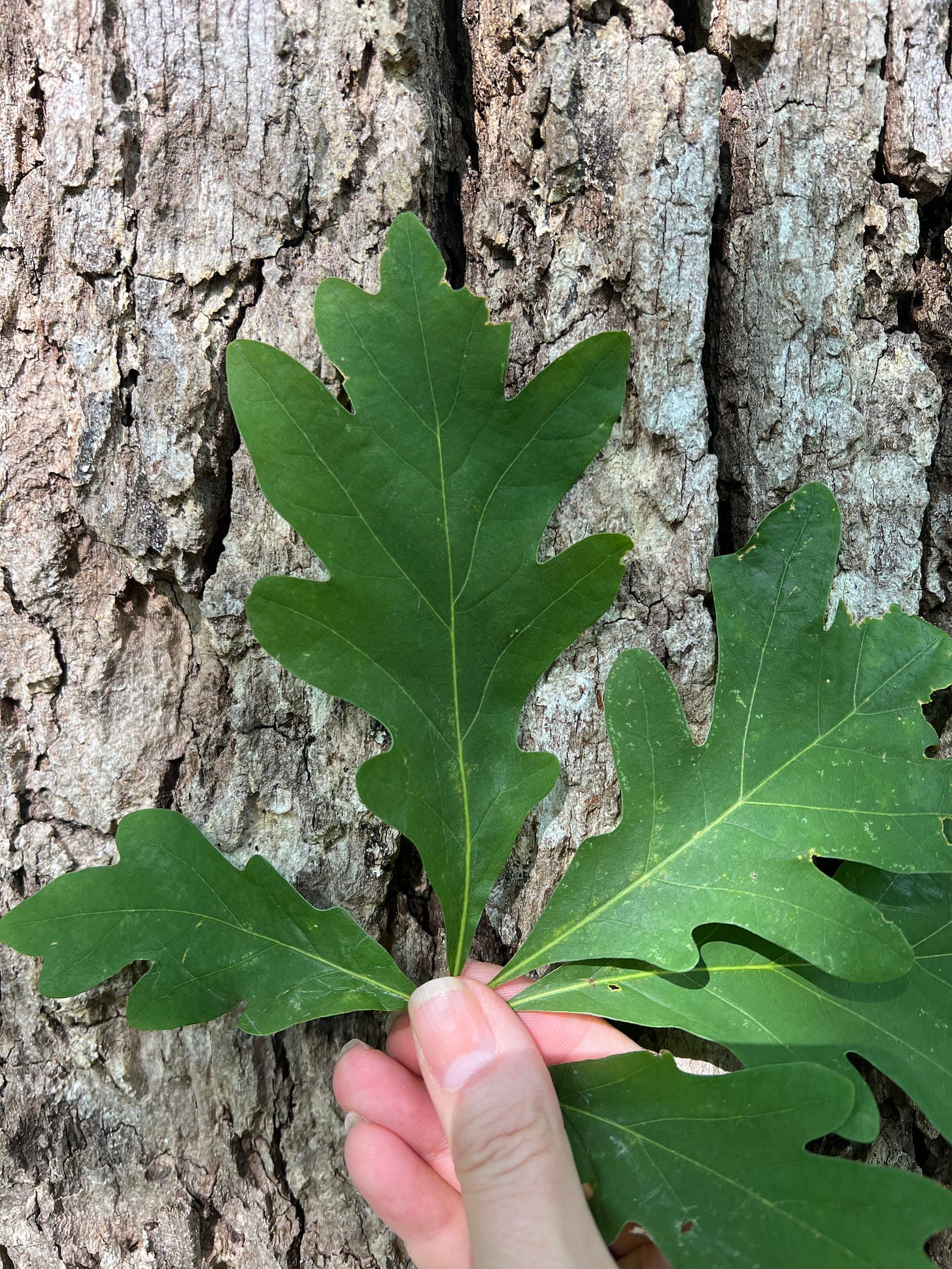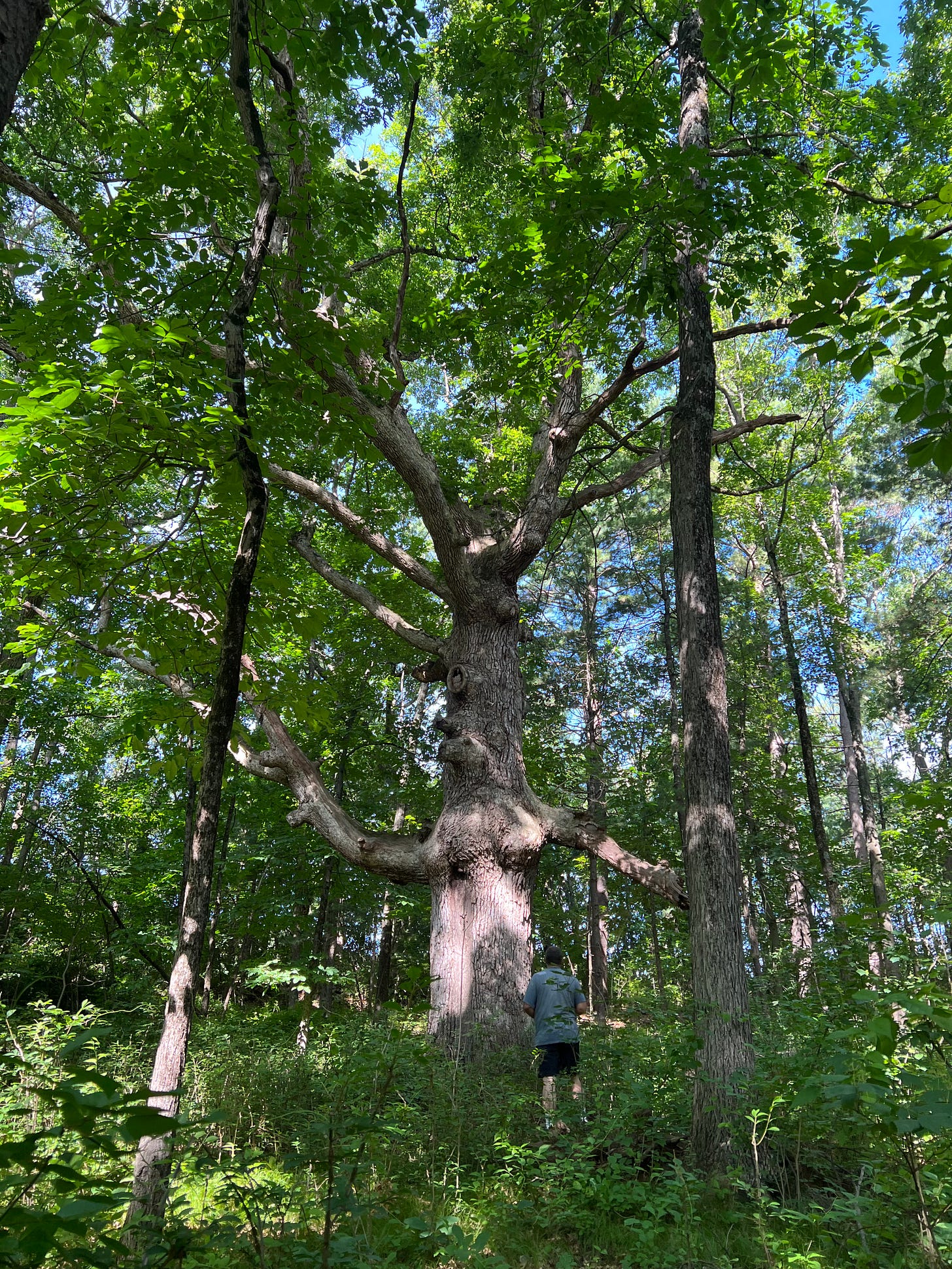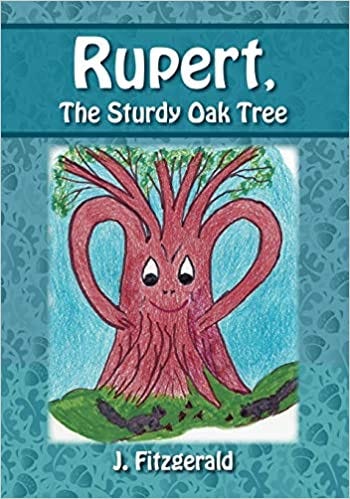Long Memories, a history of Andover in ten (or so) trees: Rupert, the Sturdy Oak
A venerable White Oak draws together stories of author June Fitzgerald, esteemed conservationist Al Retelle, and High Plain Road’s lost agricultural heritage
My friend and History Buzz reader Karen Blanford sent the following question a few months ago: “There’s a large tree on High Plain Road, between the dog park and the compost yard that’s significantly older than the vegetation surrounding it. I’ve always wondered what the property may have been and, if the tree could talk, what stories it might tell.”
The short answer, Karen, is LOTS!!
This tree is a White Oak, first of all, and has been named “Rupert” by the Conservation volunteers who take care of him. Rupert’s DBH (diameter at breast height or 4½ feet from the ground) measures 52 inches which, according to U.S. Forest Service growth formulas for White Oak, makes him approximately 250 years old. He took root most likely before the American Revolution and the founding of the United States.

Prominent through eastern deciduous forests, the typical White Oak (quercus alba) has a stocky trunk with massive horizontal limbs, an upright, rounded crown and can grow to be taller and older than the slightly more common Red Oak. Drawing its name from its ash-colored bark, the species’ leaves are rose-colored when unfurling in the spring, dark green in the summer and brightly colored in the fall. Acorns are produced when the trees are between 50 and 100 years old and occur only every 4-10 years. A long tap root makes even young specimens difficult to transplant, so they are rarely sold at garden centers or planted in yards. Older trees, like Rupert, are sensitive to construction disturbances, soil compaction from foot traffic over their root zone, decreases in leaf litter, and even subtle changes in drainage conditions or soil Ph1. Another White Oak nearby died after construction of the Dog Park, so it would be nice if we—dogs and people alike--take care of shy Rupert by admiring him from the respectful distance of the parking lot.

Friendly Faces
Rupert was named by one of his best friends and caretakers, Andover’s legendary arborist and conservationist Albert Retelle (1930-2014), after the title character in the children’s book “Rupert, the Sturdy Oak Tree Who Thought He Was a Little Better Than the Other Trees,” written and illustrated by Andover native June C. Fitzgerald (1921-2017. Mr. Retelle and his wife Evelyn were acquainted with Mrs. Fitzgerald, who spoke about the book and her writing process at the Andover Senior Center upon the book’s publication in 2010. Mrs. Retelle remembers that the book’s amusing title stuck in her husband’s head. “It’s a good name for a sturdy oak tree, isn’t it?” she said.
June (Carmichael) Fitzgerald, mother of five, grandmother of seven and great-grandmother of four, was 89 years old when she published her first book, drawing on the love of nature she’d had since growing up (about a mile west of Rupert’s location) on stepfather Everett Boutwell’s family farms on Pleasant Street and what is now 410 High Plain Road in West Andover (click for a view of the property’s barn, now converted to a home).
Writing was a retirement project for the multi-talented Mrs. Fitzgerald, who served as a Parachute Rigger in the U.S. Navy from 1943-1945, ran a catering business (drawing upon her study at Fannie Farmer’s School of Cookery in Boston), and worked many years as a registered nurse. The Andover Center for History and Culture is proud to hold in its collection several objects and documents related to her World War II service.

Generations of Farmers
Rupert was probably sprouted from an acorn during the lifetime of yeoman John Trow (1746-1806) who farmed 109 acres to the north of Blanchard’s Pond (now Haggett’s Pond). The farm, including house, barn and outbuildings, was purchased in 1816 by Trow’s son Daniel who later became one of the original proprietors of the West Parish Church. The property’s 19th-century and mostly absentee owners included Andover industrialist Peter Smith and his son Benjamin Franklin (“B. Frank”) Smith, who built the house at 278 High Plain Road and leased the top of “Bald Hill” for an orchard of peaches and plums. Later purchased by William M. Wood (at the time one of the richest men in America and a dominant figure in the nation’s textile industry) “Lake View Farm” became part of Wood’s utopian Shawsheen Village.
A Brutal Murder
In April 1926, just months after William Wood’s February death, the farm saw the most shocking event of its history when farm hand John Budrowitz, a married father of four young children, was murdered, allegedly by coworker John Zida. As detailed in both local and Boston newspapers, Zida fled into the surrounding woods upon the discovery of Budrowitz’s bludgeoned body. Despite the efforts of an armed force of state troopers, police from neighboring cities and towns, man-hunting dogs, and a civilian posse, Zida was never apprehended.

The Coming of the Highway
Further divided and sold in the years following Wood’s death, some of the Lake View land was farmed in the middle years of the 20th century by the Babicki family and some, including Rupert’s parcel, by several generations of the Chmielecki family. In 1958, as construction plans were coming together for the new “Outer Belt Interstate Highway” (Rt. 495) and a widened, straightened High Plain Road, the Chmieleckis sold 55 acres to the Roehlen Engraving Company. Founded by German entrepreneur John Bolten, the company was originally in the business of manufacturing rubber combs in Lawrence, Massachusetts and (as the Bolta Company) laminated “Boltabest” serving trays now prized by collectors of mid-century modern accessories. Roehlen probably intended to build a manufacturing facility before plans for the new road were shifted slightly, and the company was merged with religious publisher Standard Publishing to become the Standex Corporation.

A portion of this property was taken in 1960 by the Commonwealth of Massachusetts for construction of the new highway but most of it remained undeveloped until 1967 when the town of Andover purchased the 47-acre parcel for $250,000 from a realty trust, and Rupert was saved from the felling axe.
A Recreational Asset
Most of the land became part of the Andover Conservation Department’s Wood Hill/Bald Hill reservation. Andover’s Dog Park was opened in 2014 through private fundraising.
I love questions and comments! Click here to open a free Substack account, so you can like, share, and comment.
Thanks, as always, for reading!
Jane
History Buzz is a reader-supported publication. To receive new posts and support our work, consider becoming a free or paid subscriber.









That tree must have been witness to many changes in the area. Surprised it has survived being high on the hill.
Love learning about the deep layers of Andover history that Rupert may have witnessed! Great research. I enjoyed learning the difference between a Red and White Oak — fewer and far between, I imagine. May his strong arms continue to ward off future predators! :-)